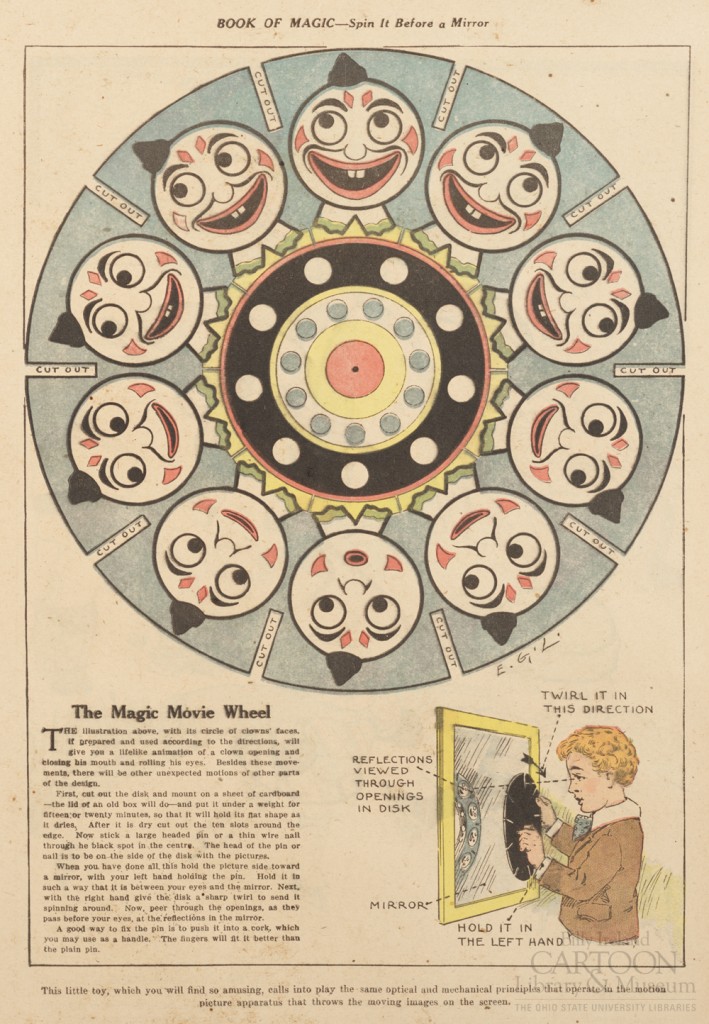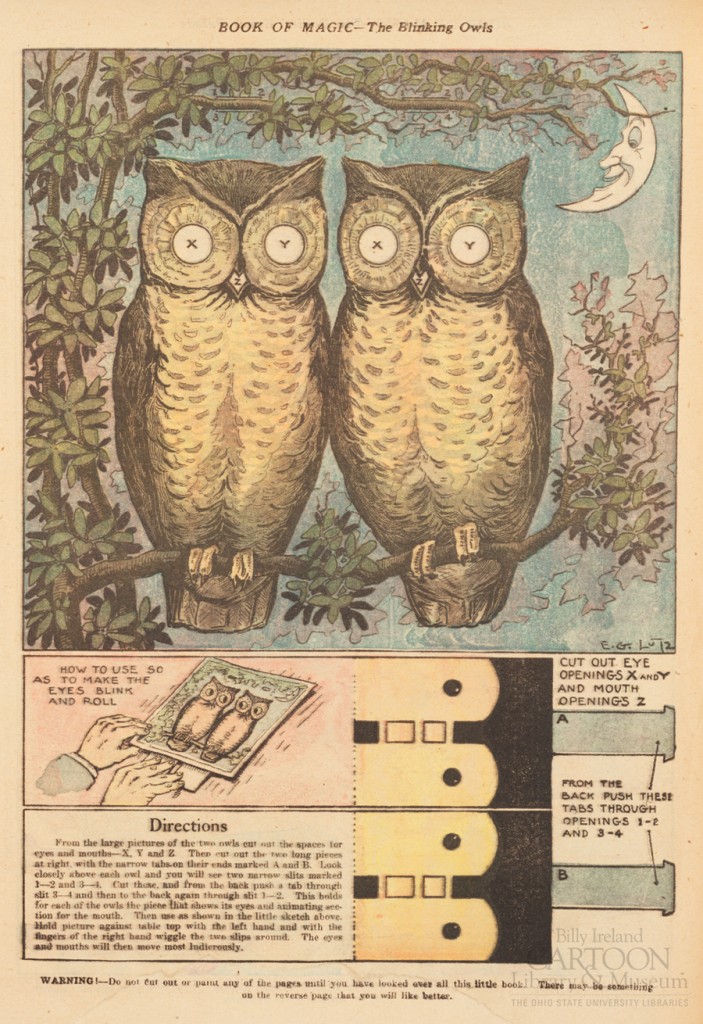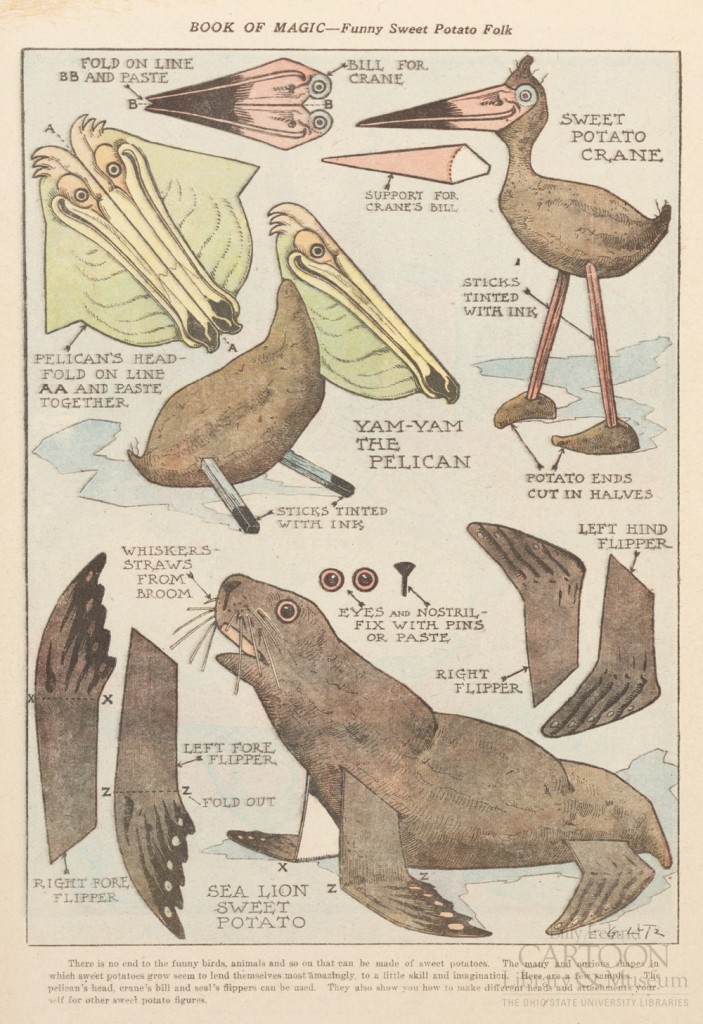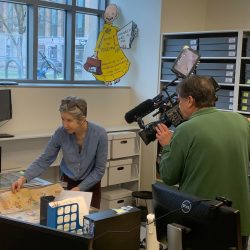Although you’ve probably never heard of him- cartoonist, animator and author E. G. Lutz is the reason that 19 year old Walt Disney took an interest in pursuing animation. Lutz’s book Animated Cartoons: How They Are Made, Their Origin and Development, is credited time and again for being the book that Disney read that got him to think about starting up a business. However, little to nothing is known about E.G. (Edwin George) Lutz, though the impact of his writing and ideas is obviously tremendous.

Animated Cartoons: How They Are Made, Their Origin and Development, by E.G. Lutz. From The San Francisco Academy of Comic Art Collection, The Ohio State University Billy Ireland Cartoon Library & Museum
One thing we do know for sure about Lutz (and as always, we encourage our readers to contribute their own knowledge!) is that he was also a brilliant newspaper cartoonist, with some of his most interesting work appearing in the gorgeously illustrated Book of Magic, which was the special children’s section of the Seattle Post Intelligencer (where Nell Brinkley’s work frequently appeared as well.) This newspaper supplement featured full-color activities for kids, most commonly illustrated mazes and connect-the-dots featuring some of the favorite newspaper cartoon characters of the time (Happy Hooligan and Ignatz appear often).
E.G. Lutz’s pages typically centered around three basic themes- playing with food, anthropomorphized animals, and early optical toys. As with many of the items in our San Francisco Academy of Comic Art collection here at the Billy Ireland Cartoon Library & Museum that we thank Bill Blackbeard for everyday, these old Book of Magic sections were inherently dispensable enough in their time just by being newsprint, but doubly so because most of the activities in them required cutting up the paper. Particularly those of E.G. Lutz’s, which we are thrilled to have beautiful in-tact copies of here in our collection.
Below are two samples of Lutz’s optical toys- complete with instructions, and a bolded WARNING! that reads “Do not paint or cut out pages until you have looked over the whole book. There may be something on the other side of a page that you will like better.” Which, I would argue is doubtful, as even grown-up librarians like myself find it hard to resist wondering what the illusion would look like in action.

E.G. Lutz newsprint optical toy illustration from The Seattle Intelligencer's Book of Magic, June 4, 1922. From The San Francisco Academy of Comic Art Collection, The Ohio State University Billy Ireland Cartoon Library & Museum (click to enlarge)
A phenakistoscope:

E.G. Lutz newsprint optical toy illustration from The Seattle Intelligencer's Book of Magic, February 12, 1922. From The San Francisco Academy of Comic Art Collection, The Ohio State University Billy Ireland Cartoon Library & Museum (click to enlarge)

E.G. Lutz newsprint optical toy illustration from The Seattle Intelligencer's Book of Magic, April 23, 1922. From The San Francisco Academy of Comic Art Collection, The Ohio State University Billy Ireland Cartoon Library & Museum (click to enlarge)
Below, creative inspiration for food-play, should you be able to find that perfect yam at the market that resembles a baby seal. We are sure that Seattle parents were thrilled with their children’s sudden interest in fruit, but possibly not at the inclusion of orange peels in home decor.

E.G. Lutz newsprint cut-out toy illustration from The Seattle Intelligencer's Book of Magic, May 28th, 1922. From The San Francisco Academy of Comic Art Collection, The Ohio State University Billy Ireland Cartoon Library & Museum (click to enlarge)

E.G. Lutz newsprint cut-out toy illustration from The Seattle Intelligencer's Book of Magic, April 9, 1922. From The San Francisco Academy of Comic Art Collection, The Ohio State University Billy Ireland Cartoon Library & Museum (click to enlarge)
Lutz’s cartoons, typically anthropomorphic cartoons, appeared in other papers as well, including the New York Herald and Philadelphia Press. We are lucky enough to have one piece of original art in our collection by E.G. Lutz, a fairly terrifying drawing of a cat with a drinking problem that can be seen below, although we have very little information about it.

Original E.G. Lutz cartoon, circa late 1880s, from the International Museum of Cartoon Art Collection, The Ohio State University Billy Ireland Cartoon Library & Museum (click to enlarge)
The forgotten E.G. Lutz was a jack of all trades, and it is unfortunate that not much is known about him. We strongly encourage any contributions in our comments section with more knowledge about his life and work, and feel he would be a great topic of research from animation to anthropology.
——————————————————————————————————————————————
UPDATE:
Blog reader, cartoonist and comics educator Ryan Claytor was inspired to make an animated gif of E.G. Lutz’s “Tigress and Her Cubs” to find out how it worked after reading our post! Check it out:
















Recent Comments